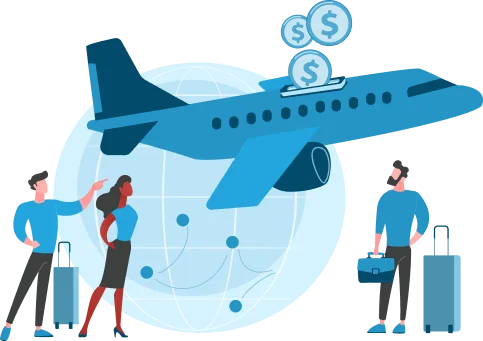
A Trusted Partner For Aviation Translation Services
As the world gets smaller and smaller, companies in the aviation industry are realizing a pressing demand to expand their worldwide outreach. This necessitates content distribution on a global level, a task that’s quite difficult. Linguistic and cultural differences emerge as a formidable challenge down the road. Removing these barriers and ensuring the accurate conversion of aviation documents requires expertise. This is where you need CCJK. We’re a professional translation company that has been delivering high-quality aviation translation services since 2000. Our translators are seasoned professionals with an unrivaled reputation for performing aviation translations with speed and accuracy.
Unlock New Possibilities With Aviation Document Translations
We take pride in our ability to provide professional aviation translation services for all kinds of documents. Get professional services in a choice of 230 languages and 800 language combinations.
- Brochures & Catalogs
- Technical / Service Manuals
- Press Releases
- Business Correspondence / Emails
- User Guides
- Multimedia Presentations Websites
- Newsletters
- Corporate Videos Patents
- Contracts & Invoices


Aviation Translations At Your Service
Aviation translations are a perfect way to penetrate foreign lucrative markets. But how do you ensure that the marketing essence, linguistic, and cultural nuances of your company’s message are never lost in the translations? And each of your international customers has an appropriate brand experience irrespective of their language, culture, and region? Well, you need to hire native translators who can render high-quality aviation translation services in as many languages as your worldwide audiences speak. This is what we do. Having a network of qualified translators, we can always help you translate aviation documents into the preferred language of your target audience.
Our Qualified Aviation Translators
We have a global network of 30,000 in-country linguists, located in the U.S., UK, China, Italy, Germany, Japan, and Turkey, among many other countries. You only get the service of translators who are specialized in the aviation industry. They only translate into the language they speak natively and also have professional fluency in the source language. And not to mention their advanced degrees and years of experience translating aviation documents. All this enables them to write with simplicity, clarity, speed, and context. For this reason, you can trust us to render professional aviation translation services with the highest quality.

Aviation translation made easy. Why wait?
Getting The Aviation Terminology Right
Having language and cultural awareness isn’t enough to offer expert aviation translations. It takes more than just that. A translator unfamiliar with aviation terminologies will be mangling the translation big time. You need experts on your side who can get across the complex terminologies and jargon in the aviation industry. This is where we at CCJK thrive. Our highly-trained professional translators understand what language makes perfect sense in the aviation sector. This enables them to render a translation that’s meticulously accurate, easy to understand, and according to the highest LSP industry standards.

We’re A Leader In Aviation Translation Services
CCJK brings more than 20 years of experience providing native-quality aviation translation services at the best prices.
30,000+ native translators
We’re a diverse tribe of 30,000 professional translators who only translate in their first language and specialty area, ensuring well-worded, localized translations every time.
Quick turnaround
We boast some of the fastest turnaround times in the translation industry. However, this does not compromise our commitment to quality.
ISO certified
Being an ISO-compliant Aviation translation company, we promise translation services of the highest quality humanly possible.
230+ languages
We present your business to the world in as many as 230 languages and 800+ language combinations. From English to Japanese, Arabic to Cajun - we’ve got the entire globe covered.




